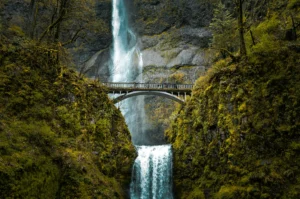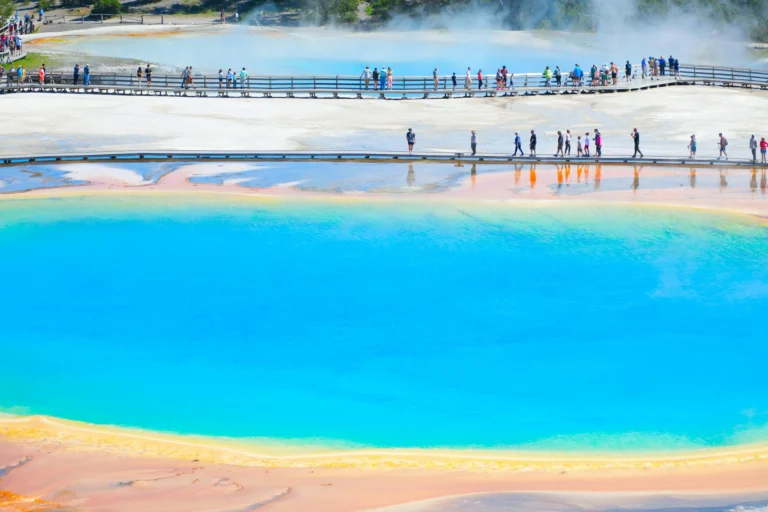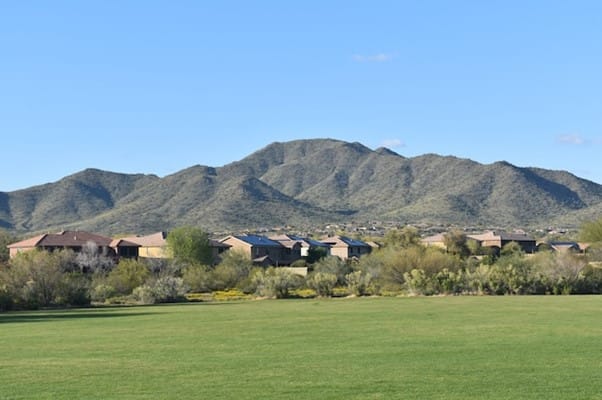To increase the beauty and attraction of the Northwest Pacific, a natural wonder called Multnomah Falls stands is highly recognized and considered. This fall is located in the Columbia River Gorge, at the east of Portland in Oregon.
Multnomah Falls is recognized specially for its 2 distinct tiers called the upper and the lower tier. The upper tier, dropping an impressive 542 feet height is considered as the tallest waterfall throughout Oregon. On the other hand, the lower tier (even being smaller), enhances the overall grandeur of the falls & has a height of 69 feet. This fall lands into a crystal-clear pool beneath.

How did the Evolution of Multnomah Falls take place?
The Multnomah falls evolution has marked it’s special place in the history of evolution due to many reasons. The formation of these falls is a testament to the powerful forces of nature. Over million of years, the erosive power of water has carved its way through the volcanic rocks.
These have created deep gorge on the Earth which is now the residing place of the falls. The unique geological features of the area, including the layered basalt cliffs, contribute to the dramatic setting of this precious natural wonder of Oregon.

Describing the Ecosystem of the Multnomah Falls –
As the multnomah falls location permits, the ecosystem of this fall is very varied. This is a diversified array and has numerous species of animals and plants living here. It is a natural habitat to variety of coniferous & deciduous trees, which includes Bigleaf maple, Douglas fir, and Western hemlock.
The falls themselves provide a vital habitat for aquatic organisms, such as trout and salmon, which migrate upstream to spawn. Also, the surroundings of the falls is very lush and vibrant which is a treat for diverse wildlife.
Specialties of Multnomah Falls –
There exist various interesting things about multnomah falls that attracts hundreds of tourists towards itself every year. Some of the topmost specialties of these falls are listed in brief below:
- A Historic Landmark –
The multnomah falls history is surely very shocking and iconic which keeps the richness of these falls intact even today. This history starts from the time of the Native American tribes who once inhabited the whole region. However, it received recognition and attention almost after a century of persistence.
In the early 20th century, the construction of the Historic Columbia River Highway brought increased tourism to the area, and Multnomah Falls became a beloved destination for visitors from around the world.

- Most Popular Tourist Destination throughout Oregon –
This fall is one of the most popular tourist attractions in Oregon. It draws millions of visitors to itself every year. The falls are easily accessible from Interstate 84, & a well-maintained trail leads to several viewing platforms.
Ultimately, this fall offers stunning vistas of the waterfall and the surrounding landscape.
- Preserving the Natural Beauty –
The U.S. Forest Service has taken steps to protect the natural beauty and ecological integrity of Multnomah Falls & the surrounding area. Visitors are encouraged to stay on designated trails, avoid littering, and minimize their impact on the environment.
These and all other rules and regulations of visiting this place are mentioned when people buy multnomah falls tickets and they should be properly read & understood before you book the tickets to visit this place.
Flow & Seasonal Variations of the Multnomah Falls –
Just like other water cycles, the multnomah falls water cycle is a continuous process that involves the circulation of water between the Earth’s surface & atmosphere. It plays a vital role in shaping the flow and seasonal variations of these falls in the below ways:
- Precipitation and Accumulation –
The water cycle begins with precipitation, which can occur in the form of rain or snow. In Multnomah Falls, precipitation accumulates in the surrounding mountains and forests.
Snowfall, to be specific, is a significant contributor to the water supply, especially during the months of winter.

- Land Surface Runoff –
As precipitation falls, it flows over the land surface and gets collected in streams and rivers. A portion of this surface runoff eventually feeds into the creek that cascades down Multnomah Falls.
The amount of surface runoff varies depending on factors such as the intensity of precipitation, the slope of the land, and the vegetation cover.
- Groundwater Precipitation –
Not all precipitation flows directly into surface water bodies. Some of it seeps into the ground, replenishing groundwater reserves. This groundwater can slowly release into the creek, contributing to the base flow, especially during dry periods. The interaction between surface water & groundwater is complex & influenced by factors like geological formations and soil permeability.
- Resultant Seasonal Variations –
The water cycle significantly impacts the seasonal variations in the flow of Multnomah Falls. During the spring, snowmelt from the mountains increases the water flow. This often leads to peak flow rates.
As soon as the summer starts approaching, snowmelt diminishes & the flow typically decreases. Lastly, in the fall and winter seasons, reduced precipitation & colder temperatures can lead to lower flow rates & even freezing conditions.
Understanding the above steps or ways in which the water cycle controls the flow and multnomah seasons will help you in adjusting your tours and booking them at the right times. Make sure to book your tours when the last stage of the cycle is on its peak. This way, you can get to experience the completion of the water cycle as well as its result during your tour.

Best Seasons to Visit Multnomah Falls
There isn’t any fixed seasons or best times to visit multnomah falls as they look marvelous and stunning in all seasons. However, the experience that people get while visiting this place in different seasons is also different.
In the spring, the falls are at their fullest, with the snowmelt from the Cascade Mountains feeding the creek. On the other hand, in the fall, the leaves turn brilliant shades of red, orange, and yellow.
In the summer, the lush green foliage provides a vibrant backdrop for the falls, while in the winter season, the falls may freeze, creating a breathtaking icy spectacle. All these seasons have their own unique impact on the falls and that is why experience for tourists visiting in different seasons is not identical.
Tips for Photo & Videographers in Multnomah Falls –
To capture the beauty of Multnomah Falls perfectly and safely through photo & videography, consider the below tips effectively:
- Early morning or late afternoon are the best times for photo of videography. These times offer the best light and atmosphere.
- Experiment with different angles to showcase the falls’ grandeur.
- Use a tripod for sharp images, especially when shooting in low lights.
- A polarizing filter can reduce reflections on the water’s surface.
- Don’t forget to capture the intricate details of the falls and surroundings.
- Capture the soothing sound of the falling water with a good microphone in your videos.
- If permitted, use a drone for aerial views. Also, consider time-lapse or hyperlapse techniques to condense time & create dynamic visuals.
If the above tips are properly considered, then you can not only take the beautiful memories of Multnomah Falls with you in your hearts but also in your cameras.

Conclusion –
Whether you are a seasoned hiker or a casual visitor, multnomah falls is a must-see destination. Its awe-inspiring beauty, diverse ecosystem, and rich history make it a truly unforgettable experience.
So, the next time you are in the Pacific Northwest, be sure to take the time to visit this natural wonder and witness the power and beauty of nature firsthand.




